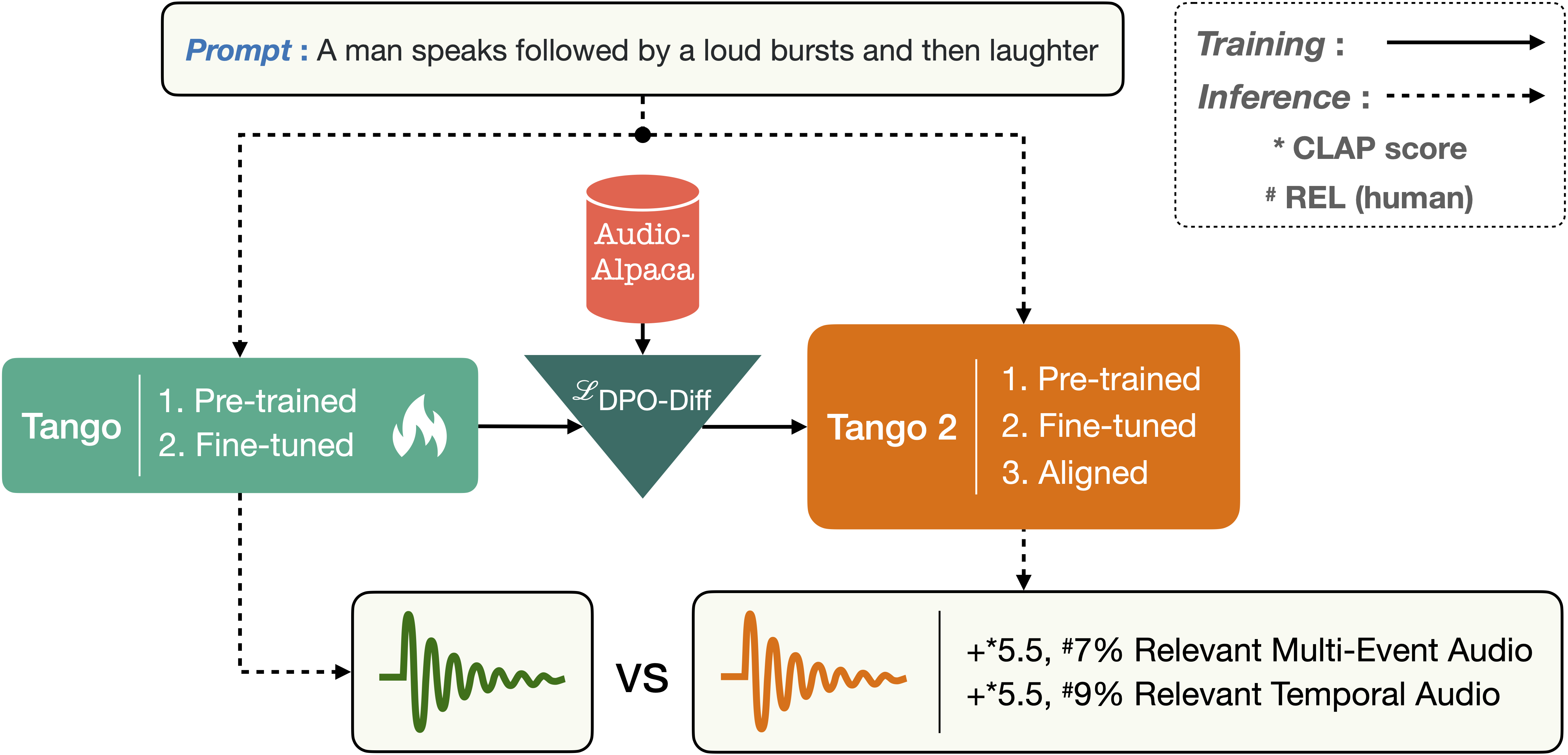Tango 2: Aligning Diffusion-based Text-to-Audio Generations through Direct Preference Optimization
Generative multimodal content is increasingly prevalent in much of the content creation arena, as it has the potential to allow artists and media personnel to create pre-production mockups by quickly bringing their ideas to life. The generation of audio from text prompts is an important aspect of such processes in the music and film industry. Many of the recent diffusion-based text-to-audio models focus on training increasingly sophisticated diffusion models on a large set of datasets of prompt-audio pairs. These models do not explicitly focus on the presence of concepts or events and their temporal ordering in the output audio with respect to the input prompt. Our hypothesis is focusing on how these aspects of audio generation could improve audio generation performance in the presence of limited data. As such, in this work, using an existing text-to-audio model Tango, we synthetically create a preference dataset where each prompt has a winner audio output and some loser audio outputs for the diffusion model to learn from. The loser outputs, in theory, have some concepts from the prompt missing or in an incorrect order. We fine-tune the publicly available Tango text-to-audio model using diffusion-DPO (direct preference optimization) loss on our preference dataset and show that it leads to improved audio output over Tango and AudioLDM2, in terms of both automatic- and manual-evaluation metrics.
PDF Abstract

